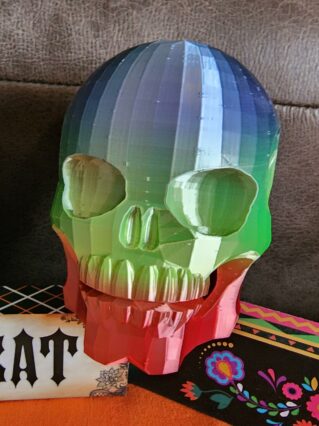Step into the extraordinary world of 3D printing, where imagination takes shape and creativity knows no bounds. With the advent of this groundbreaking technology, the ability to transform digital designs into tangible objects has become a reality.
One key element that makes this innovation possible is the vast array of 3D printing materials available. In this blog post, we will embark on a journey to discover the diverse materials that fuel the magic of 3D printing.
 PLA – The Versatile Champion
PLA – The Versatile Champion
Meet PLA (Polylactic Acid), the superstar of 3D printing materials. Derived from renewable resources like cornstarch or sugarcane, PLA offers a unique combination of affordability, ease of use, and eco-friendliness.
Its vibrant colors and smooth finish make it perfect for creating detailed prototypes, intricate models, and artistic designs. Whether you’re a hobbyist or a professional, PLA is a reliable choice to bring your ideas to life.
ABS – The Durable Workhorse
When strength and durability are paramount, ABS (Acrylonitrile Butadiene Styrene) comes to the forefront. Known for its toughness and resistance to high temperatures, ABS is ideal for producing functional parts, engineering prototypes, and mechanical components.
Its ability to withstand stress and impact makes it a popular choice in the automotive and aerospace industries. Embrace the reliability and sturdiness of ABS for your demanding 3D printing projects.
PETG – The Balanced Performer
For those seeking a material that combines the best of both worlds, PETG (Polyethylene Terephthalate Glycol) is the perfect fit. Offering a balance between strength, flexibility, and ease of printing, PETG is versatile and widely used.
Its excellent layer adhesion and impact resistance makes it a reliable option for functional prototypes, medical devices, and consumer products. Experience the versatility and reliability of PETG in your 3D printing endeavors.
Nylon – The Tough Resilient
Unleash the power of durability and flexibility with Nylon, a material that excels in challenging applications.
With its exceptional mechanical properties, including high tensile strength and resistance to wear and tear, Nylon is often chosen for industrial components, tooling, and structural parts.
Its ability to withstand harsh environments and retain its integrity over time makes it a top choice for engineers and manufacturers.
Beyond the Basics – Exotic Materials
The world of 3D printing materials goes beyond the familiar. Dive into exotic materials like metal-infused filaments, wood composites, and even conductive or magnetic materials.
These innovative options open up a whole new dimension of possibilities, enabling the creation of functional electronics, artistic masterpieces, and even customized prosthetics. Push the boundaries of creativity with these cutting-edge materials.
In 3D printing, materials are the key to turning imagination into reality.
Whether you’re seeking versatility, durability, or the ability to experiment with exotic materials, the possibilities are endless.
Embrace the power of PLA, ABS, PETG, Nylon, and beyond, and unlock a world of innovation and creativity.
Step into the future of manufacturing with 3D printing materials and redefine what is possible.
3D printing is already revolutionizing the manufacturing industry, and the future of 3D printing materials is even more exciting.
With new materials being developed all the time, manufacturers can create stronger, lighter, more flexible, and more customizable products than ever before.
Here are just a few of the 3D printing materials that are poised to change the future of manufacturing:
- Graphene: Graphene is a one-atom-thick sheet of carbon that is incredibly strong and conductive. It is already being used to create 3D-printed composites stronger than steel and lighter than aluminum.
- Carbon nanotubes: Carbon nanotubes are even stronger than graphene, and they can also be used to create 3D-printed composites with remarkable properties. For example, carbon nanotubes have been used to create 3D-printed bone scaffolds that are stronger and more biocompatible than traditional materials.
- Metals: 3D printing with metals is already used to create prototypes and end-use parts for various industries, including aerospace, automotive, and medical. As 3D printing technology develops, we expect to see even more metal 3D printing applications.
- Biomaterials: Biomaterials create 3D-printed implants, tissue scaffolds, and other medical devices. As bioprinting continues to grow, we can expect to see 3D-printed medical devices that are more complex and effective than ever.

Conclusion,
These are just a few of the many 3D printing materials poised to change the future of manufacturing. As these materials become more widely available and affordable, we expect to see a revolution in how products are designed, manufactured, and used.
The future of 3D printing is bright, and the possibilities are endless.
With new materials being developed all the time, manufacturers will be able to create stronger, lighter, more flexible, and more customizable products than ever before.
This will lead to new applications for 3D printing in various industries, and it will change how we interact with the world around us.
Thanks,
Bullwinkle

